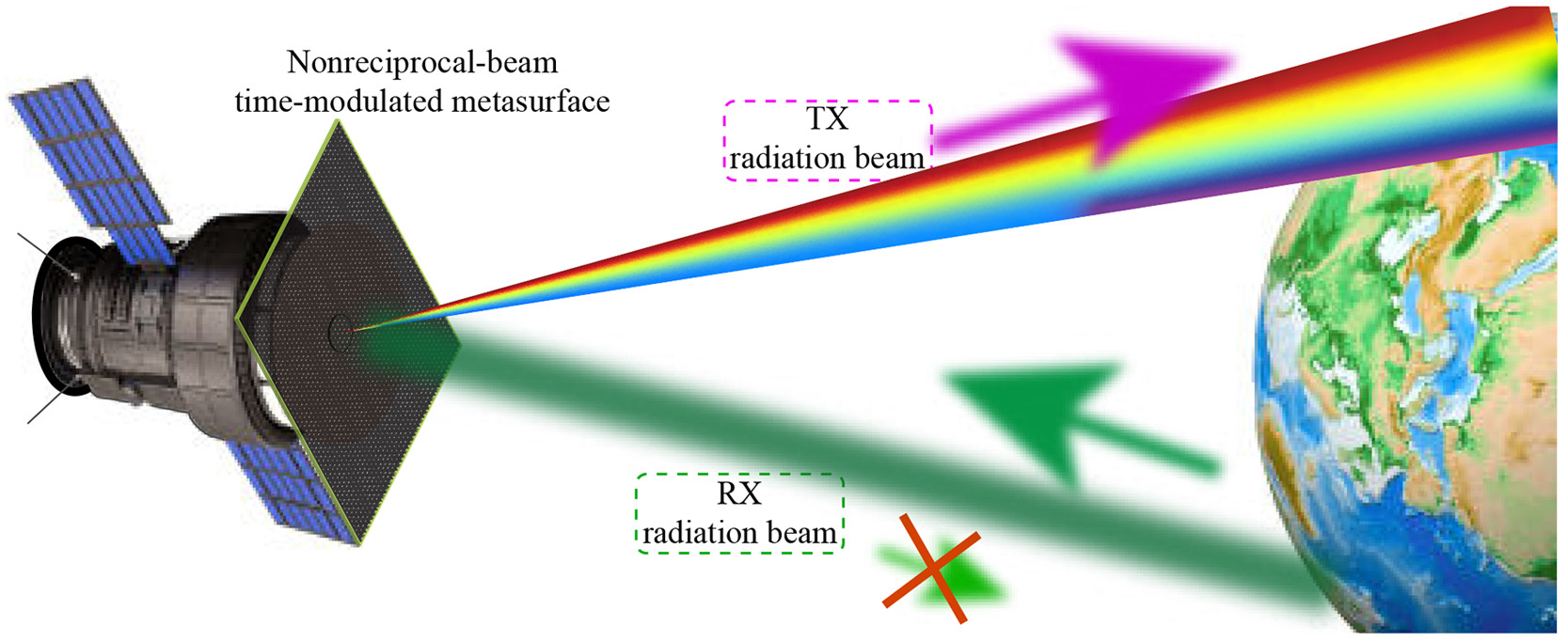"Magnetic Meta-Atoms Form Non-Reciprocal Metasurface"

April 12, 2023 feature
This article has undergone Science X's editorial process and policies to ensure credibility. The following attributes have been highlighted by the editors:
- fact-checked
- peer-reviewed publication
- trusted source
- proofread
by Ingrid Fadelli , Tech Xplore
Metasurfaces are two-dimensional (2D) or planar versions of metamaterials that possess unique properties not commonly found in natural materials. These materials can typically be produced using widely-known fabrication processes, thanks to their flat nature, and can help control electromagnetic waves in various devices.
Reciprocal metasurfaces follow the rules outlined by the Lorentz reciprocity theorem, which means that they display characteristics symmetrically aligned with the direction of electromagnetic wave propagation. However, the emerging class of non-reciprocal metasurfaces do not abide by this theorem, enabling optical functions to be encoded in waves propagating both forwards and backwards. Thus, non-reciprocal metasurfaces are particularly promising for the development of technologies, such as non-reciprocal antennas or radomes designed to preserve the operation of radar antennas and wireless communication systems.
Recently, researchers from the University of Electronic Science and Technology of China and Massachusetts Institute of Technology (MIT) developed a non-reciprocal magnetic metasurface that could be used to develop devices with various non-reciprocal functionalities. The metasurface was made using a series of lanthanum(La)-doped barium hexaferrite (BaFe12O19) self-biased magnetic meta-atoms.
'We report a self-biased non-reciprocal metasurface based on magnetic meta-atoms made from La-doped BaFe12O19,' Weihao Yang, Jun Qin and their colleagues wrote in their paper. 'The metasurface offers a transmittance of up to 77% and an operation angle of ±64°.'
Each of the meta-atoms in the team's non-reciprocal metasurface can be individually magnetized along different directions, enabling bidirectional non-reciprocal phase-gradient profiles to be engineered. In initial experiments, they showed that their metasurfaces can provide electromagnetic wave isolation, circulation, and full-duplex transmission.
'We show that they can be used for on-demand bidirectional phase modulation, which provides non-reciprocal functionalities including microwave isolation, non-reciprocal beam steering, non-reciprocal focusing and non-reciprocal holography,' Yang, Qin and their colleagues wrote in their paper. 'The approach could also be potentially extended to megahertz and optical frequencies by using different self-biased magnetic materials.'
Yang, Qin and their colleagues’ new non-reciprocal metasurfaces could be used to develop non-reciprocal antennas and radomes in the future. Their innovative design could also inspire other teams to create similar metasurfaces based on self-biased magnetic meta-atoms. The researchers plan to extend their studies by using different self-biased meta-atoms to cover megahertz to optical wave frequencies and to further enhance the performance of devices.
© 2023 Science X Network




